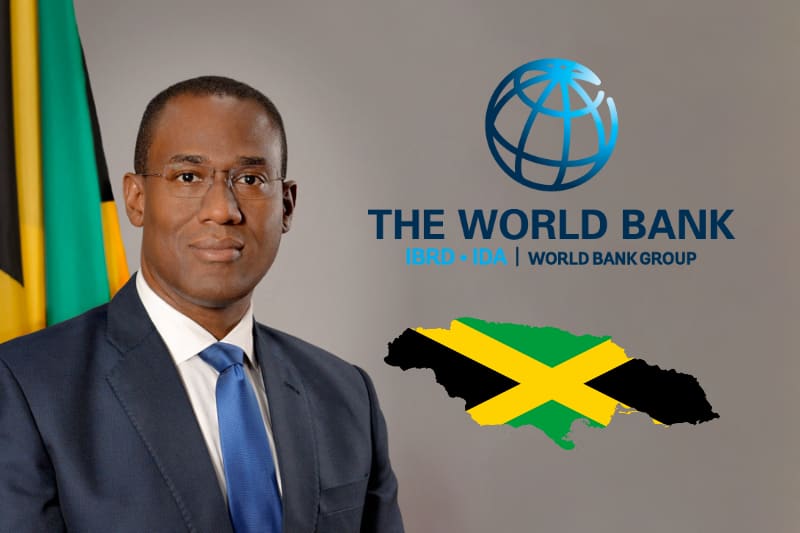Not every risk transfer instrument designed to trigger for every storm: Jamaica MoF

While Jamaica won’t receive a payout from its catastrophe bond after hurricane Beryl passed close to the island but was not intense enough, or a direct hit, to activate that structure’s trigger, the fact the country has a multi-layered disaster risk financing strategy means liquidity is available, the country’s Minister of Finance Dr. Nigel Clarke has highlighted.
Speaking after Beryl’s passage just to the south of Jamaica last week, Clarke explained that not every layer of its risk transfer arrangements is designed to respond to every storm.
“We were very fortunate that hurricane Beryl did not make landfall in Jamaica and the trajectory of the center of the hurricane passed 45 miles south of Kingston,” Clarke said.
He highlighted that some sections of the island have seen significant damage from the major hurricane and that the country’s disaster risk financing and transfer instruments will respond accordingly.
Clarke explained, “The government of Jamaica has strategically and proactively put in place a multi-layered suite of instruments that can provide the financial resources to finance the response and recovery from natural disaster.”
Adding that, “While it is not designed, nor is it expected, that every storm should trigger all instruments, the idea is that some instruments provide resources for every storm.”
In this case, Jamaica may benefit from more than one layer of its arrangements, with its own contingency fund and natural disaster fund both set to be tapped.
“Given the extent of the damage and preliminary assessment anecdotally reported on, it is likely that we will access these two layers of our natural disaster and federal contingency fund to the tune of up to J$4.5 billion,” Clarke explained.
Jamaica also has a contingent credit arrangement with the Inter-American Development Bank (IADB) that Clarke noted could also respond to Beryl’s impacts.
Clarke said that, “The amount of this layer, as defined by the resources that would come available for the highest intensity and most direct hit Caribbean is $46 billion. We will have to ascertain over the next few days how much of this has been triggered by Beryl.”
In addition, Clarke noted that Jamaica has CCRIF SPC parametric disaster insurance coverage for both excess rainfall and tropical cyclones.
As we explained last week, there is an anticipation that some CCRIF SPC parametric capacity will be paid out after Beryl, certainly for the Windward Islands that were most impacted, but possibly also for Jamaica.
“We will know very shortly whether these policies have been triggered by hurricane Beryl,” Clarke said of the CCRIF parametric coverage.
Moving on to speak about Jamaica’s $150 million IBRD catastrophe bond, Clarke said, “Had hurricane Beryl made landfall in Jamaica, had the center of hurricane Beryl passed over the landmass of Jamaica, the catastrophe bond would certainly have been triggered.
“Also, had the intensity of hurricane Beryl not declined, as compared to where it was when it was in the mid-Caribbean, the catastrophe bond will also have triggered under those circumstances.”
It was a near miss, but the catastrophe bond was really designed to respond and payout to a direct hit from a major hurricane, or close brush with one more intense than Beryl. This is why Jamaica has a layered approach, with other instruments that respond to smaller events, or those that pass by a little further out. On that basis, the catastrophe bond has worked as designed in this case.
As well as all of those disaster risk financing and risk transfer arrangements, Jamaica also has a liquidity line with the IMF it could tap into if needed, Clarke further explained.
He explained though, “At this point, we do not anticipate that the government of Jamaica will encounter any liquidity problem as a result of hurricane Beryl and as such, we are unlikely therefore to draw on this facility over the next few days.”
Adding that, “The government of Jamaica will aggregate the damage from hurricane Beryl and aggregate the interventions required as a result of hurricane Beryl, as well as finalising the resources that are available from our disaster risk financing instruments.”
Clarke stated, “Your government has been proactive in arranging disaster risk financing, that is contingent upon the occurrence of a natural disaster, and doing so in advance.
“As such, with the advent of hurricane Beryl, there is no need for the government to scramble to find resources to address the emergency response that is required.”
He closed his statement by saying, Finally, it is important for us to remember that hurricane Beryl is only the first hurricane of the 2024 hurricane season. As such, it is going to be critically important that we continue to be prudent with resources, including resources that emanate from disaster risk financing sources, so that we will also be prepared in the event that other storms or hurricanes come our way during the remainder of the 2024 hurricane season.”
Jamaica’s parametric catastrophe bond remains available to respond to future storms that might be more impactful, where the $150 million of liquidity it could provide if triggered may be even more valuable than it would have been for Beryl.
Also our article from last week: Jamaica Minister of Finance highlights risk transfer as hurricane Beryl approaches.






